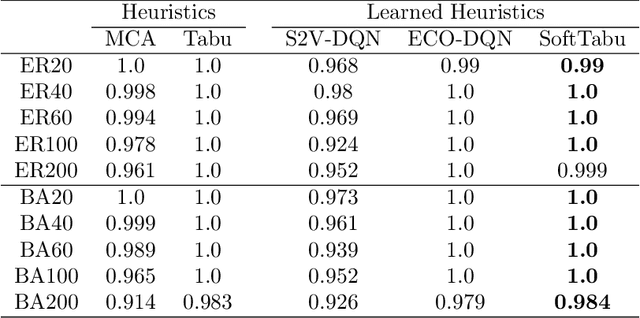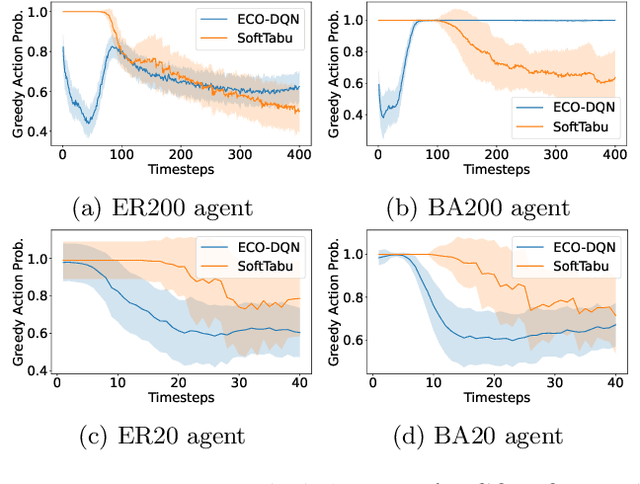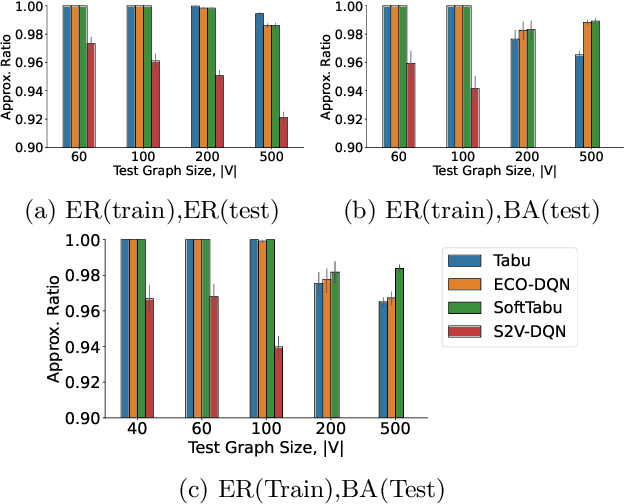Ankur Nath
Theoretically Grounded Pruning of Large Ground Sets for Constrained, Discrete Optimization
Oct 23, 2024



Abstract:Modern instances of combinatorial optimization problems often exhibit billion-scale ground sets, which have many uninformative or redundant elements. In this work, we develop light-weight pruning algorithms to quickly discard elements that are unlikely to be part of an optimal solution. Under mild assumptions on the instance, we prove theoretical guarantees on the fraction of the optimal value retained and the size of the resulting pruned ground set. Through extensive experiments on real-world datasets for various applications, we demonstrate that our algorithm, QuickPrune, efficiently prunes over 90% of the ground set and outperforms state-of-the-art classical and machine learning heuristics for pruning.
Mamba in Vision: A Comprehensive Survey of Techniques and Applications
Oct 04, 2024



Abstract:Mamba is emerging as a novel approach to overcome the challenges faced by Convolutional Neural Networks (CNNs) and Vision Transformers (ViTs) in computer vision. While CNNs excel at extracting local features, they often struggle to capture long-range dependencies without complex architectural modifications. In contrast, ViTs effectively model global relationships but suffer from high computational costs due to the quadratic complexity of their self-attention mechanisms. Mamba addresses these limitations by leveraging Selective Structured State Space Models to effectively capture long-range dependencies with linear computational complexity. This survey analyzes the unique contributions, computational benefits, and applications of Mamba models while also identifying challenges and potential future research directions. We provide a foundational resource for advancing the understanding and growth of Mamba models in computer vision. An overview of this work is available at https://github.com/maklachur/Mamba-in-Computer-Vision.
A Benchmark for Maximum Cut: Towards Standardization of the Evaluation of Learned Heuristics for Combinatorial Optimization
Jun 14, 2024Abstract:Recently, there has been much work on the design of general heuristics for graph-based, combinatorial optimization problems via the incorporation of Graph Neural Networks (GNNs) to learn distribution-specific solution structures.However, there is a lack of consistency in the evaluation of these heuristics, in terms of the baselines and instances chosen, which makes it difficult to assess the relative performance of the algorithms. In this paper, we propose an open-source benchmark suite MaxCut-Bench dedicated to the NP-hard Maximum Cut problem in both its weighted and unweighted variants, based on a careful selection of instances curated from diverse graph datasets. The suite offers a unified interface to various heuristics, both traditional and machine learning-based. Next, we use the benchmark in an attempt to systematically corroborate or reproduce the results of several, popular learning-based approaches, including S2V-DQN [31], ECO-DQN [4], among others, in terms of three dimensions: objective value, generalization, and scalability. Our empirical results show that several of the learned heuristics fail to outperform a naive greedy algorithm, and that only one of them consistently outperforms Tabu Search, a simple, general heuristic based upon local search. Furthermore, we find that the performance of ECO-DQN remains the same or is improved if the GNN is replaced by a simple linear regression on a subset of the features that are related to Tabu Search. Code, data, and pretrained models are available at: \url{https://github.com/ankurnath/MaxCut-Bench}.
Guided Combinatorial Algorithms for Submodular Maximization
May 08, 2024



Abstract:For constrained, not necessarily monotone submodular maximization, guiding the measured continuous greedy algorithm with a local search algorithm currently obtains the state-of-the-art approximation factor of 0.401 \citep{buchbinder2023constrained}. These algorithms rely upon the multilinear extension and the Lovasz extension of a submodular set function. However, the state-of-the-art approximation factor of combinatorial algorithms has remained $1/e \approx 0.367$ \citep{buchbinder2014submodular}. In this work, we develop combinatorial analogues of the guided measured continuous greedy algorithm and obtain approximation ratio of $0.385$ in $\oh{ kn }$ queries to the submodular set function for size constraint, and $0.305$ for a general matroid constraint. Further, we derandomize these algorithms, maintaining the same ratio and asymptotic time complexity. Finally, we develop a deterministic, nearly linear time algorithm with ratio $0.377$.
Unveiling the Limits of Learned Local Search Heuristics: Are You the Mightiest of the Meek?
Oct 30, 2023



Abstract:In recent years, combining neural networks with local search heuristics has become popular in the field of combinatorial optimization. Despite its considerable computational demands, this approach has exhibited promising outcomes with minimal manual engineering. However, we have identified three critical limitations in the empirical evaluation of these integration attempts. Firstly, instances with moderate complexity and weak baselines pose a challenge in accurately evaluating the effectiveness of learning-based approaches. Secondly, the absence of an ablation study makes it difficult to quantify and attribute improvements accurately to the deep learning architecture. Lastly, the generalization of learned heuristics across diverse distributions remains underexplored. In this study, we conduct a comprehensive investigation into these identified limitations. Surprisingly, we demonstrate that a simple learned heuristic based on Tabu Search surpasses state-of-the-art (SOTA) learned heuristics in terms of performance and generalizability. Our findings challenge prevailing assumptions and open up exciting avenues for future research and innovation in combinatorial optimization.
A Frequency And Phase Attention Based Deep Learning Framework For Partial Discharge Detection On Insulated Overhead Conductors
Dec 21, 2020



Abstract:Partial discharges are known as indicators of degradation of insulation systems.The reliability and selectivity of methods to detect internal partial discharges in the covered conductors are dictated by the level of background noise. The background noise distorts the pattern of partial discharges (PD-pattern) and decreases the capability of detection methods to recognize the features of PD-pattern corresponding to the degradation of an insulation system. This paper proposes a deep learning based framework with novel implementation of frequency and phase attention layers to detect partial discharge pattern on insulated overhead conductors.The introduced phase and frequency attention layers finds the discriminative regions responsible for PD activity in the spectograms of the signals.
 Add to Chrome
Add to Chrome Add to Firefox
Add to Firefox Add to Edge
Add to Edge